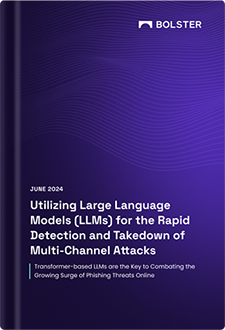What is domain squatting?
Domain squatting, also known as cybersquatting, refers to the practice of registering or acquiring a generic top-level domain (gTLD) that is confusingly similar to a popular or well-known brand, company, or individual with bad faith intent, usually with a plan of profiting from the confusion or misdirection of internet users. Domain squatting continues to be a major concern for businesses today.
In domain squatting, the squatter typically aims to sell the domain name to the legitimate owner at an inflated price or monetize it through paid advertisements or unauthorized content. This unethical, opportunistic practice can lead to reputation damage, loss of revenue, and customer confusion.
Domain squatters often leverage common typos or variations of popular domain names to lure unsuspecting users who may accidentally mistype the desired website’s URL. They may also use similar-sounding names, misspellings, or add prefixes or suffixes to the original name.
By registering these domain names, attackers can divert traffic meant for the legitimate website to their own site, potentially exposing users to malicious content, scams, or phishing attempts. Additionally, they can tarnish the brand reputation by associating it with unauthorized or inappropriate content.
Domain squatting and legal concerns
Domain squatting is not only a nuisance for legitimate website owners but also a legal concern. Many jurisdictions have enacted laws to protect trademark owners from such practices. Holding a domain name without legal intent is considered a bad faith registration. However, enforcing these laws can be challenging due to the global nature of the internet and the complexities of domain ownership and registration.
Consulting legal experts who specialize in intellectual property and domain squatting is crucial if you discover that someone is squatting on a domain name that infringes on your brand or trademark. These experts can provide guidance on the best course of action to take, including sending cease and desist letters, filing complaints with domain authorities, or taking legal action if necessary. With their expertise, they can navigate the complex legal landscape surrounding domain squatting and help you protect your brand effectively.
How to mitigate the risks of domain squatting
Here are some steps that IT security and risk management professionals can take to mitigate the risks of domain squatting:
1. Register multiple variations of your domain name: By registering different versions of your domain name (e.g., misspellings, hyphenated versions, different top-level domains), you can prevent squatters from acquiring those domains and redirecting traffic away from your legitimate website.
2. Monitor domain registrations: Regularly monitor domain registration databases and keep an eye out for any newly registered domains that closely resemble your brand or company name. This can help you detect potential domain squatters early on. Bolster provides domain monitoring and takedown features that meet this need.
3. Review trademark databases: Check trademark databases regularly to identify any potential trademark infringements or unauthorized use of your brand name. If you find any instances of domain squatting, you can take legal action to protect your brand and intellectual property rights.
4. Take legal action when necessary: If you discover that someone is squatting on a domain name that infringes on your brand or trademark, consult with legal experts to understand your options for taking legal action. Laws regarding domain squatting vary across jurisdictions, so it’s important to seek advice from professionals who specialize in intellectual property law.
5. Implement strong cybersecurity measures: While it may be challenging to prevent users from accessing squatted domains entirely, you can implement strong cybersecurity measures to minimize the risk of users inadvertently visiting malicious or unauthorized websites associated with squatted domains. This can include using firewalls, anti-malware software, and DNS filtering to block access to known malicious domains. Additionally, regularly updating and patching software and educating employees about the dangers of phishing and other online threats can help reduce the likelihood of falling victim to domain squatting scams.
By following these steps, IT security and risk management professionals can greatly reduce the risks associated with domain squatting and protect their organization’s brand, reputation, and intellectual property. Taking a proactive approach and staying vigilant in monitoring domain registrations and trademark infringements can help mitigate the potential harm caused by squatters. Additionally, implementing strong cybersecurity measures can further safeguard against the risks posed by malicious or unauthorized websites associated with squatted domains.
Conclusion
In conclusion, domain squatting poses a significant threat to organizations’ online presence and brand reputation. However, by implementing proactive measures such as monitoring domain registrations, registering multiple extensions, utilizing trademark protection services, consulting legal experts, securing your brand’s online presence, and educating your employees, you can effectively combat domain squatting and safeguard your organization’s domain and brand. It is crucial for IT security and risk management professionals to prioritize these measures and stay vigilant against the ever-evolving tactics of domain squatters.






